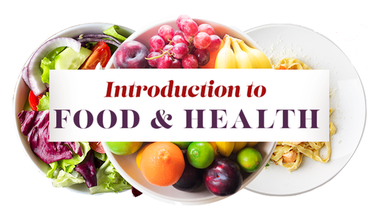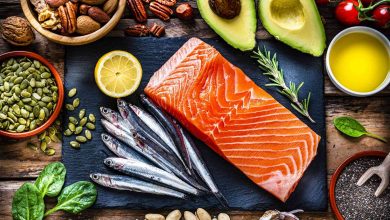The best variety of potatoes ready for frying
Potato processing is the future of the industry, experts say. Guaranteed and understandable sales market and stable prices for producers of raw materials, high profitability for processors, as well as significant export potential make many companies think about projects in this area
In Europe, about 50-75% of the potatoes produced are processed.
In Russia – no more than 20%, estimates the managing partner of the portal Potatos.ru Nikita Borisov. In 2020, out of the expected industrial harvest of 7 million tons, According to him, the potato processing sector in the country is growing by about 2-5% per year.
The tendency to increase the volume of potato processing is obviously present. Large enterprises are interested in increasing the marginality of the final product, explains Krasilnikov. This is one of the important strategic directions of agriculture in Russia.
I am sure the deputy director of the All-Russian Research Institute of Potato Farming. A. G. Lorkha Victor Starovoitov. Including from the point of view of developing the export of potato products to the CIS countries, primarily Kazakhstan and Turkmenistan, which now buy such products from Uzbekistan.
Recycling can significantly reduce pressure on the market by lengthening the production cycle and spreading consumer demand more evenly throughout the year, adds Borisov. He connects the low share of processed potatoes with the low demand for processed products among the population. They are traditionally replaced in Russia with cheaper pasta, other flour products, and cereals.

“Many processed products, such as gnocchi, are practically unknown in our country, and are very popular in Europe,” he knows. Now potatoes in Russia are most often processed into flakes, starch, frozen fries and chips. However, there is also a fairly high share of imports of most of these products on the market. The same chips and fries, pickled potatoes, high-grade starch, etc. are actively purchased abroad.
At the same time, with the right support for the industry and targeted investments, almost 100% of these goods could be replaced with products of their own production, Borisov is sure.
Processing is promising if we consider consumers with growing or at least not decreasing incomes, emphasizes the general director of the Tver Agro-Industrial Company (growing potatoes and primary processing) Sergey Konanykhin.
“When people have money, they willingly take frozen french fries, wedges, etc Consumer preferences for marketable potatoes have also changed: if earlier 70% was sold through small retailers and markets, now it is a maximum of 20%, the rest is sold through retail chains. At the same time, stores are no longer interested in 25 kg nets, they are less likely to dump potatoes on pallets so that buyers can pick up the required amount and weigh it.
Small packages of washed potatoes of 2-5 kg are becoming more and more popular. And this is also processing, albeit primary. For million-plus cities, where the well-being of the population is higher, sales of peeled potatoes are also relevant. But these are long-term trends.
“The situation with coronavirus may push the market back to large packages of unwashed potatoes,” Konanykhin emphasizes. “People in general are now sweeping everything off the shelves.” Nevertheless, the Tver agro-industrial company itself adapts to market requirements and plans to expand the types of potato packaging.
Recycling is a costly business, its organization requires large investments, including in infrastructure, comments Tatyana Gubina, a member of the board of directors of the Malino holding. But there are still no special state programs to support the direction.
“There is hope that soon the Ministry of Agriculture and the Ministry of Industry and Trade will pay attention to the problems of the sector and help solve them, at least they will provide infrastructure assistance to those companies that have a raw material base,” she says.
“So far, not all farms can afford to implement such projects.” However, there is another side of the problem: some enterprises that are engaged in processing do not have enough raw materials. After all, not all potatoes can be processed. Only 20-25% of the crop produced in the country is suitable for this, says Borisov.
He believes that the key factors slowing down the implementation of projects are their high capital intensity, currency risks, an unformed consumer market and a limited amount of high-quality domestic raw materials on the market. “Another risk is the seasonality of potato production and high risks of crop failure,” adds Borisov. “And potato processing plants desperately need a rhythmic supply of raw materials in any month.”
There is stagnation in the commodity sector, the Ministry of Agriculture is sounding the alarm and asking to keep the area, not to reduce it. But low profitability is forcing some producers to reduce the planting of potatoes. According to the forecast of the Potato Union, a certain decrease in production volumes is expected in 2020.

And the development of processing could be a way out of this situation. “We have repeatedly raised the issue of supporting the processing sector with the relevant departments,” says Krasilnikov. “I hope that in the future a set of measures necessary for the industry will be developed.”
According to Aleksey Krasilnikov, medium-depth processing, which involves heat treatment, cleaning, and packaging, is developing most dynamically in the country. “Between unpacked and unwashed and at least somehow processed potatoes, the difference in the margin can be significant,” the expert notes. “For example, unwashed potatoes in March of this year cost 12-13 rubles / kg, and washed and packed – from 40 rubles / kg or more.”
If the farm has a full production cycle from seeds to processing, then its activity is a priori high-margin, Starovoitov is sure. According to his estimates, the profitability of ordinary table potatoes at a cost of about 6.8 rubles / kg and a price of 8 rubles / kg is a maximum of 20%. And the marginality of processed products at the first stage (washing, sizing, packaging) grows to 30-40%. Deeper processing (into chips, fries) brings another 30% of income, the expert claims.
Armen Varderesyan, General Director of the Russian office of Tummers Methodic (Netherlands, manufacturer of equipment for processing vegetables and potatoes), believes that in order to successfully sell the potato crop in retail chains.
it is better for small businesses and farmers to focus on primary processing, that is, on separating the crop from stones and land, packing products in their original or washed form. “Even with the cost of 3-5 rubles/kg of potatoes and the price of packaged products already from 10-15 rubles/kg, you can get a good profit,” he says.



